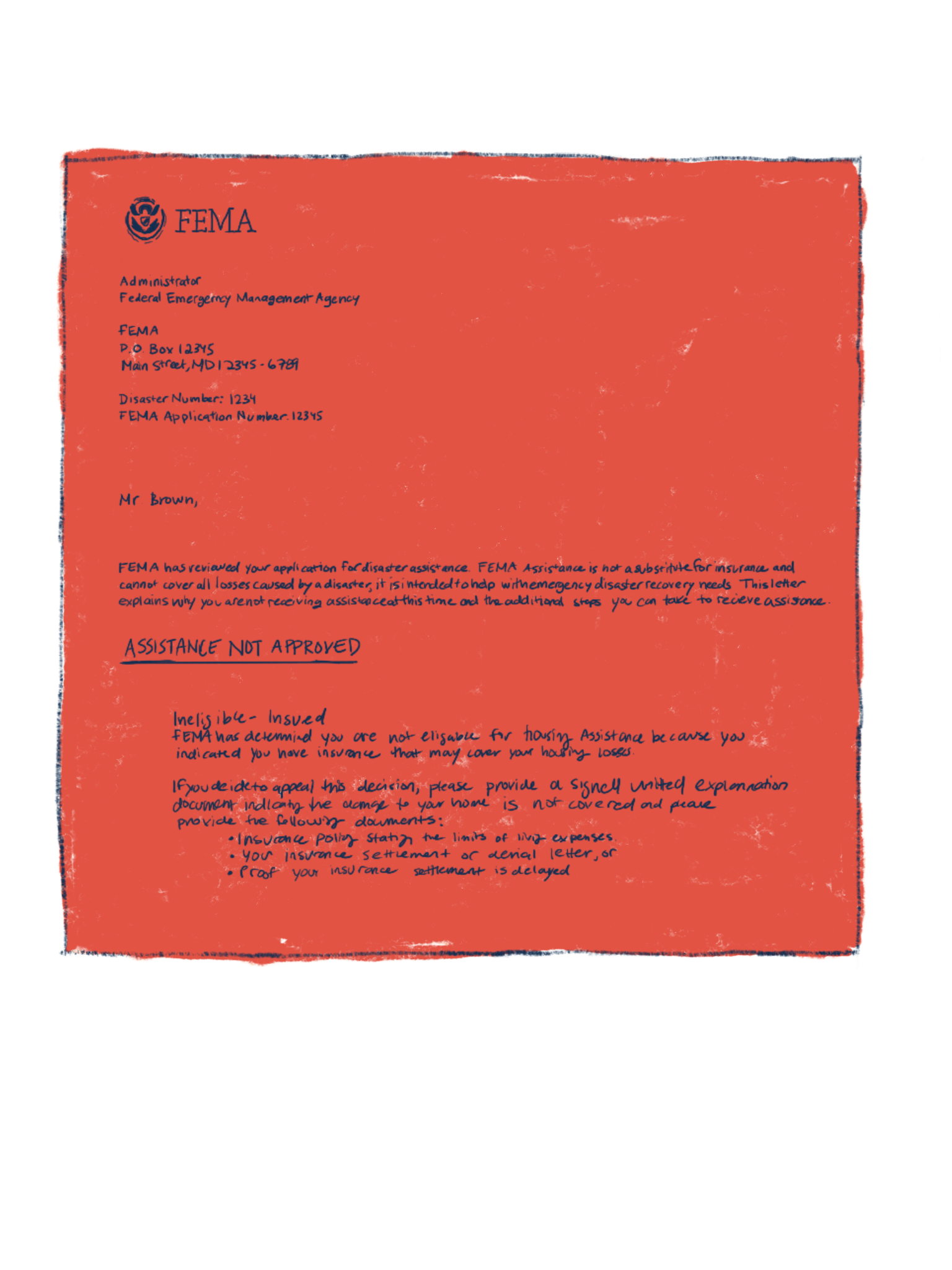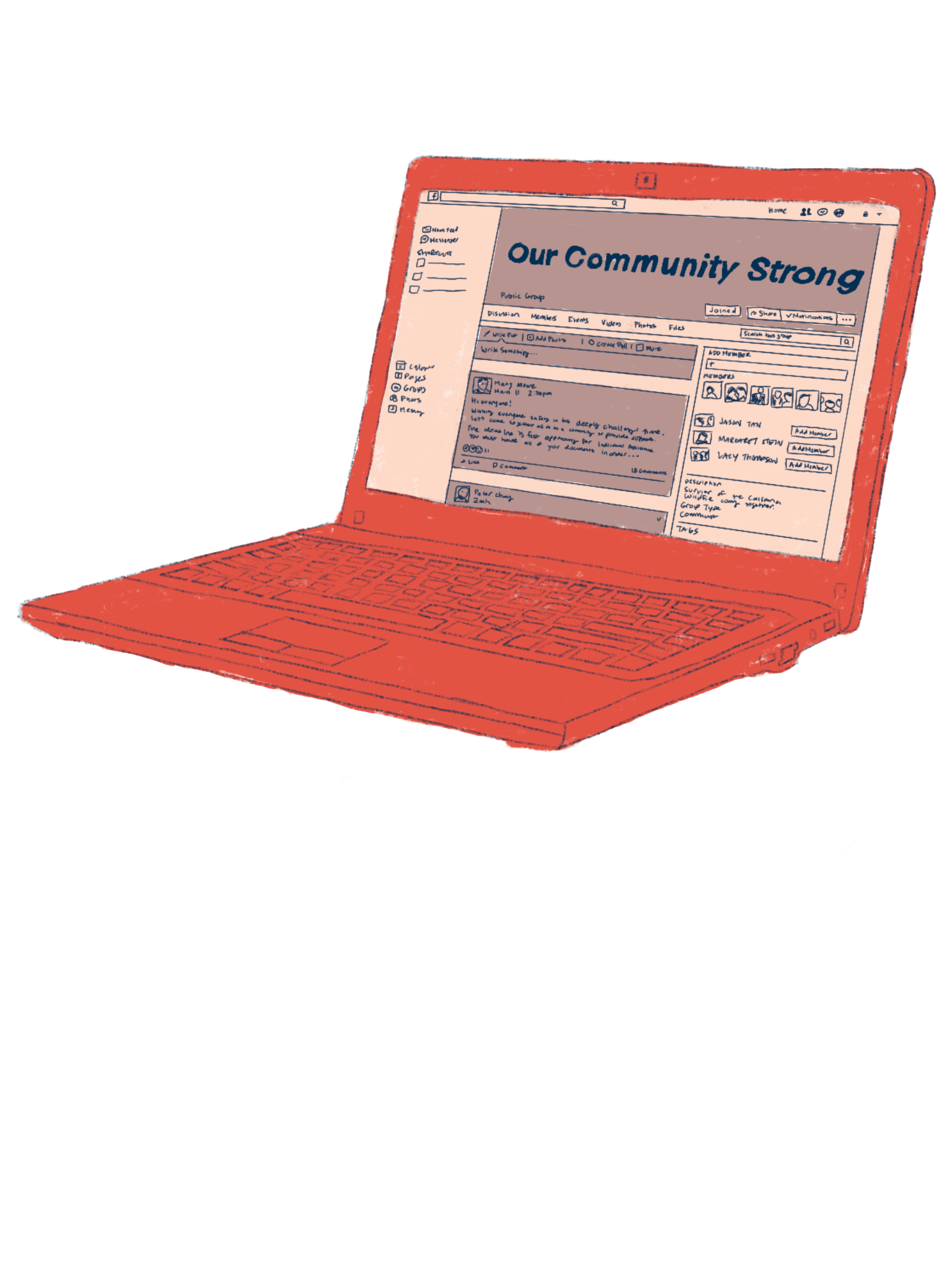I was really frustrated with all the paperwork and having to prove I needed help.
I told the case worker, 'I’ve already lost everything; haven’t I shown you enough to show you I’m deserving? Do you not trust what I’m saying?'
After receiving funds from FEMA, a son and daughter start work to rebuild their father’s home damaged by Hurricane Maria. They are starting the process by salvaging what they can until contractors, who are in high demand, can begin building a stronger concrete home.
FEMA/K.C. Wilsey
Where we are
An increasing number of Americans face natural disasters each year, yet they often lack the support necessary to fully recover.
When a natural disaster hits, survivors face the painful task of putting the pieces of their lives back together. They must care for basic needs and keep businesses going while enduring stress and trauma. On top of this, people must manage multiple bureaucratic processes with competing guidance, a confusing and frustrating journey at a moment when people expect government to show up and help.

1 Source: FEMA

Our approach
To start, we listened to people’s stories.
The Life Experience research team spoke with people nationwide about this moment in their lives and where the government process could have been simpler and more helpful. The listening sessions captured honest conversations about peoples' experiences, candid feedback on what could have worked better, and what really made a difference for them. Their stories have been combined and are represented here through illustrations. The quotes are real, but names have been changed.











The team conducted interviews in-person, virtually, in English, and in Spanish. Participants included people from twelve states and territories who have experienced hurricanes, tornadoes, and wildfires and represented various backgrounds—including low-income renters and home owners, parents, the elderly, new immigrants, veterans, and people with disabilities.
The team spoke with:
- 43 survivors
- 22 frontline staff
- 16 government / nonprofit staff
Discovery insights
Framing for collective thinking about customer pain points
How might we support survivors by minimizing the burden of navigating multiple applications?
How might we better design our information, interactions, and services for people who have endured a traumatic experience and may have ongoing stress?
How might we improve and coordinate our communications about the full range of Federal programs for the general public and small business owners alike?
Design Phase
Designing customer-centered solutions
View progress on our milestonesIn the 2023 design phase, the portfolio team started three pilot projects:
- Building a Trauma-Informed care approach worked with FEMA, SBA, and HUD representatives to build and deliver pilot training modules for Federal staff who serve disaster survivors directly to develop their awareness of trauma-informed care principles to utilize while working on location with people seeking Federal services or assistance.
- Calculating a more holistic burden estimate created a prototype method and calculator aiming to bring precision and clarity to disaster survivors’ and small business owners’ burdens while seeking support.
- Streamlining disaster assistance processes initiated cross-agency coordination as both FEMA and SBA developed new assistance applications.
The project will develop standardized design guidelines to promote trauma-informed communications and interactions between agencies and disaster survivors. The work will start with collecting and assessing current communication resources, tools, and resources. The design work will involve prototyping and testing new templates and methods that promote a trauma-informed approach.
Project objectives
The project will help agency and front-line staff have the knowledge, skills, and support to take a trauma-informed approach when engaging disaster survivors. Ultimately, it will result in a more sensitive and responsive recovery experience for people impacted by disasters.
December 2023 update
Early in project development, the team learned that disaster recovery staff across agencies are committed to improving their skills in working with survivors. The team co-created three training modules focused on the basics of trauma-informed care; working with survivors; and taking care of oneself when recovering from a disaster. The team piloted in-person training modules in FEMA Region 2, created prototypes of three videos, and produced an accompanying guidebook.
In a site visit to a Disaster Recovery Center (DRC) in Vermont, the team learned first-hand from survivors about their challenges in obtaining Federal assistance. Survivors communicated that engaging with DRC staff helps overcome obstacles in the process. The team discovered that DRC staff are not trained in trauma-informed care or working with survivors, however. Federal staff also struggle to cope with the primary and secondary traumatic stress that may result from doing this work. The team believes that improvements in agencies’ work with disaster survivors will require agencies and front-line staff to integrate trauma-informed care principles and skills into their practices.
Milestones
Measures of success
Key outcomes:
The trauma-informed care project will result in increased survivor comprehension and level of engagement with assistance programs.
Design phase project measures:
The project will define and blueprint an end-to-end view of the effort required of disaster survivors and small business owners to apply for, maintain, and receive Federal disaster assistance benefits. The burden estimate provides a baseline measure to calculate the impact of improvement efforts. The project will also support government-wide CX efforts by piloting a burden baseline methodology/calculator.
Project objectives
The project will create a method for calculating end-to-end burden using a uniform baseline methodology to capture psychological, learning, and time costs. High Impact Service Providers (HISPs) and agencies can utilize the example and toolkit for their burden assessments and to measure improvements and cost savings.
December 2023 update
“Administrative burden” refers to the costs of interacting with the government, such as time, money, and psychological stress. Typically, agency burden estimates are limited to the time it takes to complete a form, which doesn’t capture all of the effort and resources an individual might expend to navigate a government service.
The team developed a Holistic Burden Assessment process and prototype tool that uses a customer-centric perspective to learn, categorize, and measure burden across the entire customer journey, including aspects of psychological, learning, compliance, and redemption costs. The team reviewed existing models used worldwide and adapted these practices for use by Federal agencies. The team has initially tested the process and a calculator prototype to assess experiences of disaster survivors and small businesses; however, the calculations are incomplete until the team has more data and time to work with agency experts in the field.
Milestones
Measures of success
Key outcomes:
Federal agencies and delivery partners involved in disaster recovery utilize the burden baseline toolkit for service improvements. HISPs, other Life Experience teams, or Federal agencies use the toolkit to understand customer experience burden baselines.
Design phase project measures:
This project aims to clarify and simplify the experience of applying for Federal disaster assistance programs. Currently, survivors must navigate and apply for each relief program separately. These processes can be confusing, and survivors are unclear about the different kinds of assistance they may be eligible for and how to apply; once they do, they must keep track of multiple processes and communication channels and often enter the same data multiple times.
Project objectives
The project will first work on FEMA’s Individual Assistance (IA) registration process and SBA’s disaster loan application. Improving how survivors begin FEMA’s application process and clarifying how FEMA and SBA offer direct assistance programs could reduce the burden of the initial application processes for survivors.
December 2023 update
In early 2023, the team started the design phase with extended scoping to better understand the identified customer pain points in the intake and referral process (when the customer moves between FEMA and SBA). For example, the team learned from Disaster Recovery Center (DRC) staff that technology and communication barriers make it difficult for survivors to navigate the disaster registration intake process with FEMA and the referral process to other Federal agencies that provide individual assistance. The team worked with FEMA and SBA to gather and analyze customer navigation data. They focused on the referral process from FEMA to SBA and learned that 7 percent of all FEMA registrants ultimately apply for assistance with SBA. Evidence from in-person research suggests that survivors who could benefit from assistance from SBA do not understand that the agency provides assistance to homeowners.
The project team consulted with FEMA on potential improvements to disasterassistance.gov and SBA on enhancements to the MySBA Loan Portal to identify areas for improved coordination. Both agencies are progressing on internal changes that will improve the survivor experience and will further shape this project. The team also discussed the possibilities for data sharing and other developments with agency leaders during recurring Steering Committee meetings.
Milestones
Measures of success
Key outcomes:
The project’s success is defined by its ability to reduce customer navigation burden, minimize duplication, and effectively communicate steps to access relevant assistance provided by multiple Federal entities, which will enable more survivors to receive the aid they are eligible for and recover more quickly.
Project Documentation
- Project Charter
- Project One-Sheet
- Design Project Summary: Building a TraumaInformed Care Approach
- Design Project Summary: Calculating a More Holistic Burden Estimate
- Design Project Summary: Streamlining Disaster Assistance Processes
- Customer Journey Map & Stories
- Information collection approved under OMB Control #3206-0276
- Life Experience Initiative Summary
- Executive Order 14058
- President’s Management Agenda
Project Outputs
Agency collaborators
- General Services Administration (GSA)
- Department of Housing and Urban Development (HUD)
- Department of Agriculture (USDA)
- Office of Management and Budget (OMB)
- Department of Health & Human Services (HHS)
- Small Business Administration (SBA)
- Department of the Interior (DOI)
- Department of Commerce (DOC)
- Department of Homeland Security (DHS)
